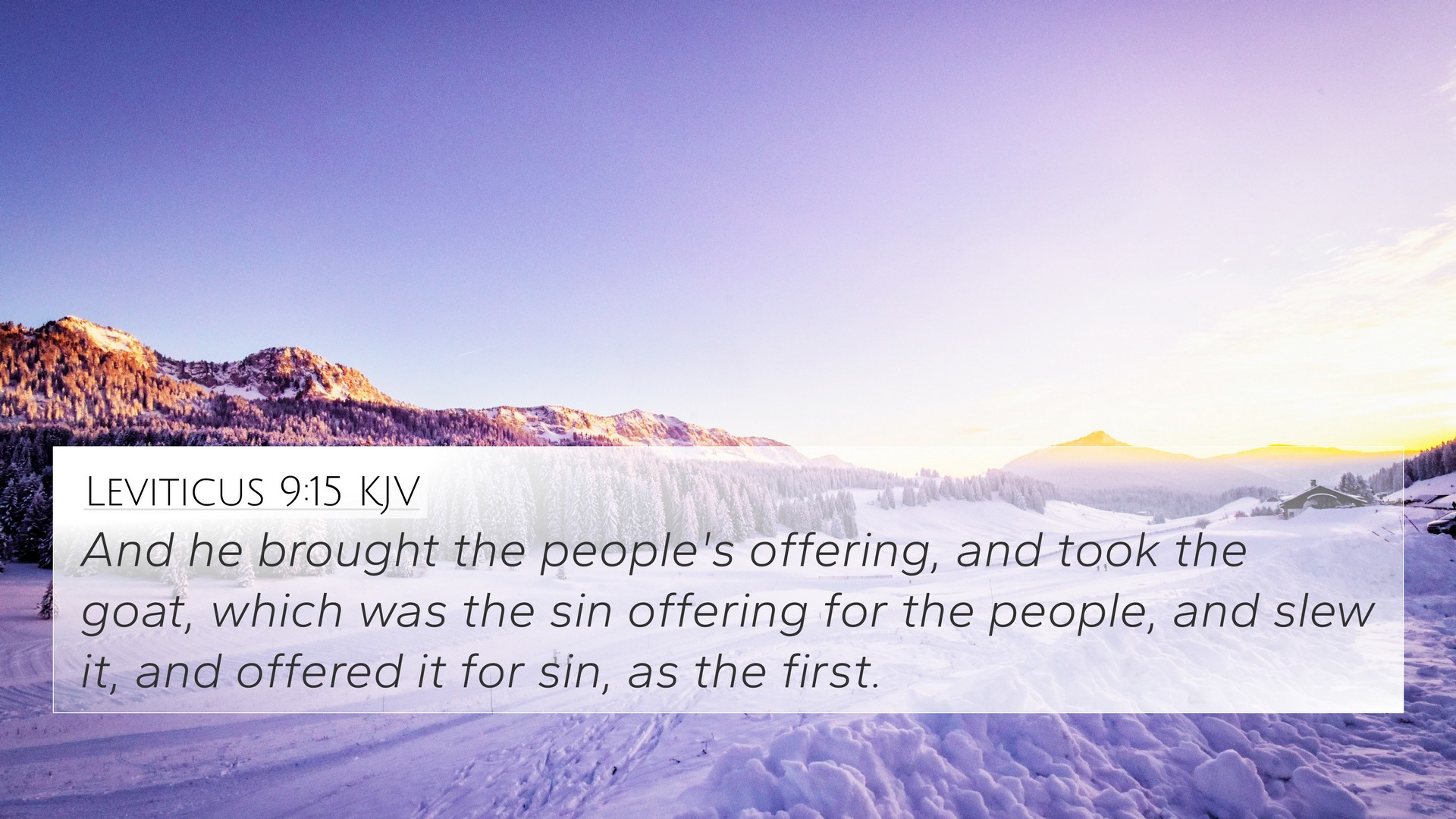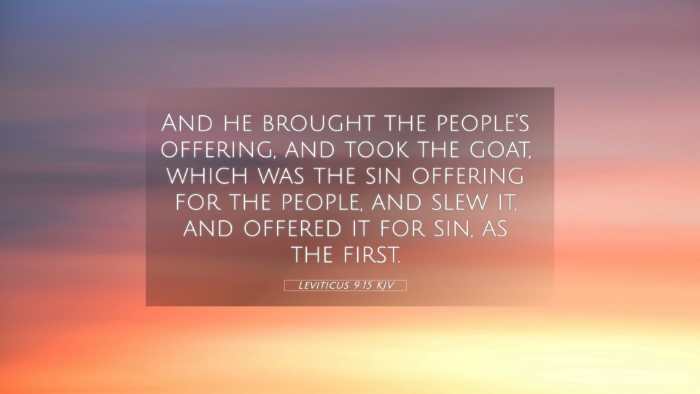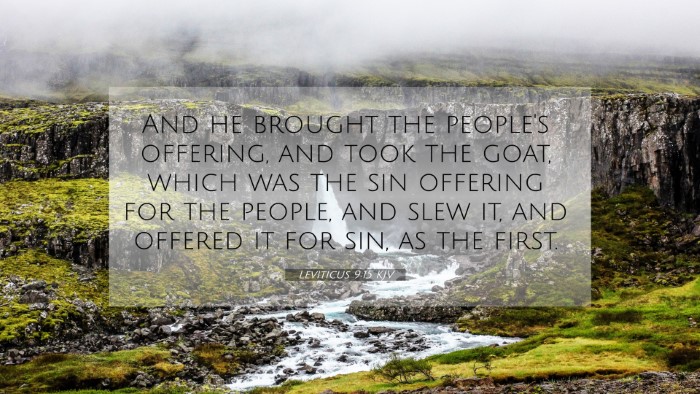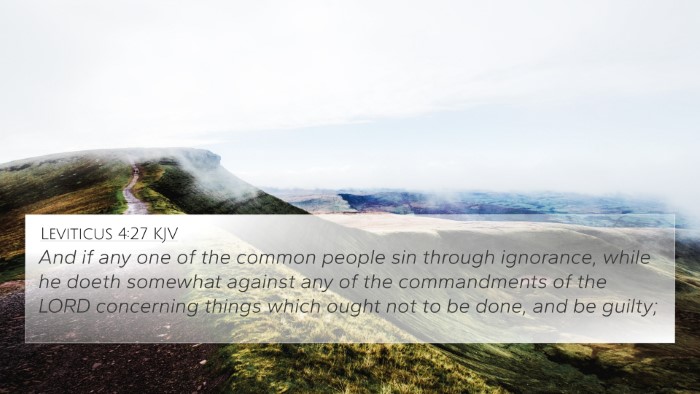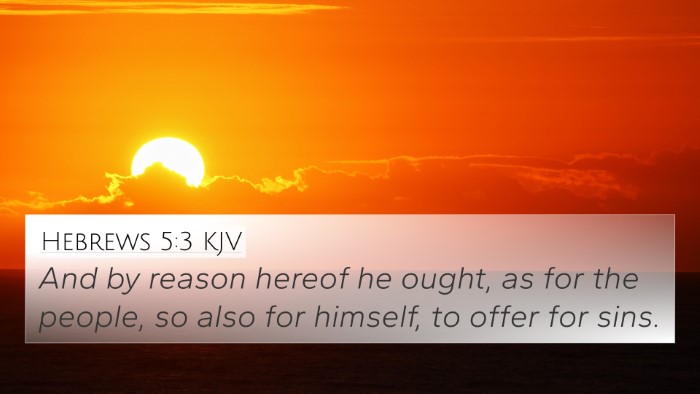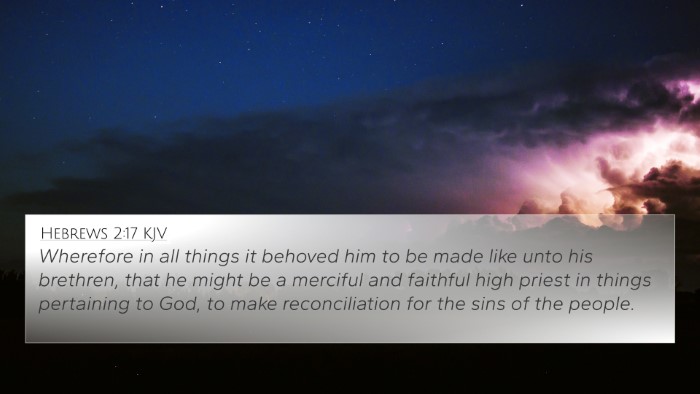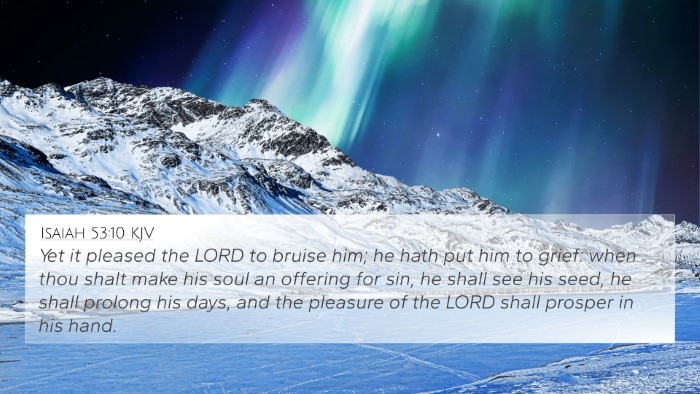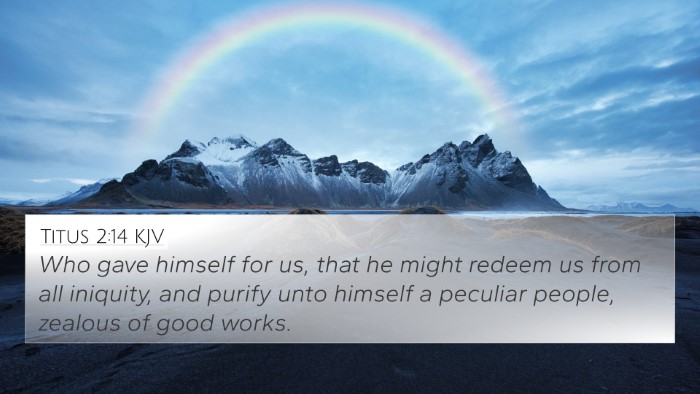Understanding Leviticus 9:15
Bible Verse: Leviticus 9:15
Verse Insight: This verse states, "And he brought the people's offering, and took the goat, which was the sin offering for the people, and killed it, and offered it for sin, as the first." This portion of the scripture highlights the role of Aaron, the high priest, in making atonement for the people of Israel through the sacrificial system that God instituted.
Commentary Insights
The verse represents a significant moment in the ceremonial practices of the ancient Israelites, showing the seriousness of sin and the necessity of sacrifice for atonement. The act of bringing a sin offering indicates the people's acknowledgment of their transgressions and reliance on God's provided means for reconciliation.
- Matthew Henry's Commentary: Henry emphasizes that the sin offering was not just a ritual; it was essential for addressing the guilt of the people. He notes that the process illustrates God's holiness and justice, as well as His mercy in providing a method for cleansing and restoration.
- Albert Barnes' Notes: Barnes highlights the significance of the sin offering in this context, comparing it to Christ's ultimate sacrifice. He points out that the offering made by Aaron is a precursor to the final atonement made by Jesus, which provides a deeper understanding of redemption and grace.
- Adam Clarke's Commentary: Clarke adds that the choice of the goat for the people's sins reflects ancient Jewish customs, linking it to the Day of Atonement. He notes how these early practices foreshadowed the ultimate sacrifice of Christ, emphasizing the theme of substitution in atonement.
Bible Verse Cross-References
Leviticus 9:15 relates to various other scriptures, highlighting thematic and doctrinal connections:
- Leviticus 16:10: The scapegoat ritual on the Day of Atonement strengthens the understanding of sin offerings.
- Hebrews 9:26: Connects the sacrifices of the Old Testament to Christ's perfect sacrifice, indicating a fulfilled systemic purpose.
- Romans 3:25: This verse reinforces the concept of atonement through faith in Jesus Christ as a propitiation for sin.
- 1 Peter 2:24: Jesus' bearing of our sins aligns with the sacrificial theme present in Leviticus.
- Isaiah 53:5: Prophecy regarding Jesus' atoning death parallels Old Testament sacrificial themes.
- John 1:29: John the Baptist's proclamation of Jesus as "the Lamb of God" directly connects to the sacrificial practices described in Leviticus.
- Hebrews 10:1-4: Discusses how the law's sacrifices were a shadow of the good things to come, referring to the sacrificial system established in Leviticus.
Thematic Connections
This verse and its cross-references reveal several important biblical themes:
- Atonement: The necessity of sacrifice to atone for sins is a foundational theological theme in both the Old and New Testaments.
- Substitution: The idea of a substitute bearing the sins of the people is essential to understanding the role of Jesus as the ultimate Lamb.
- Consecration: The process of purification and setting apart the people for God, reflective of holiness and community with Him.
Exploring Bible Verse Parallels
A comparative analysis between Leviticus 9:15 and New Testament teachings enhances understanding of biblical covenants:
- Comparing the sacrificial rituals of the Israelites with Christ's redemptive work brings forward the continuity of God's plan for salvation.
- Investigating the implications of sin offerings in light of grace reveals depth in understanding how believers relate to God in the New Covenant.
Conclusion
In conclusion, comprehending Leviticus 9:15 through public domain commentaries uncovers the rich layers of meaning embedded in this single verse. A deeper appreciation for biblical cross-referencing enhances our understanding of scripture, revealing thematic connections that persist throughout both the Old and New Testaments. Through this interconnected exploration, we gain valuable insights into God's plan for redemption and the profound grace extended to humanity.
Embracing tools for Bible cross-referencing, such as a Bible concordance or a Bible cross-reference guide, further equips believers to explore the scriptures meaningfully. Utilize methods of cross-referencing in your studies to discover connections and parallels that may illuminate your understanding of the Word.
